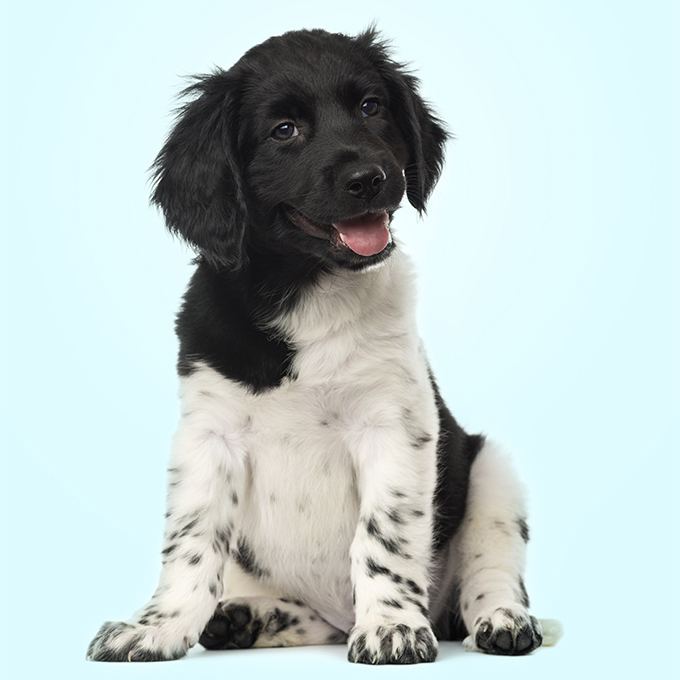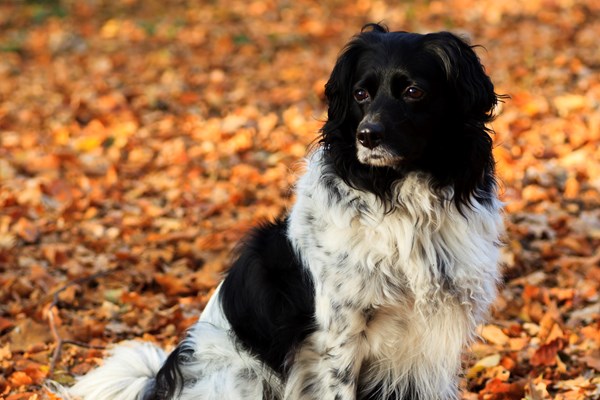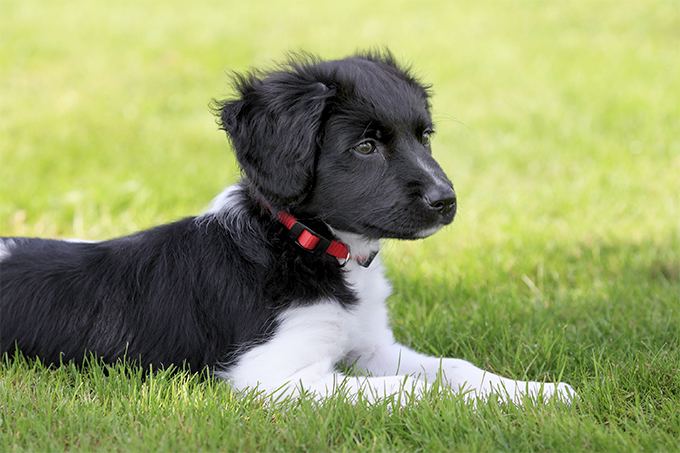Other Names: Stabij, Beike, Stabijhoun, Fryske Stabij.
The Stabyhoun or Stabij is one of the top five rarest dog breeds in the world. It is from the Dutch province of Friesland and in particular from the Frisian forest area, a region in the southeast and east of Friesland. The breed has been mentioned in Dutch literature going back to the early 1800s, but has only extended its range from the 1960s outside of Friesland and not until the 2000s did the range officially extend beyond the Netherlands. The name Stabij translates roughly as “stand by me” with the last part simply Frisian, meaning dog, which is pronounced “hoon”. The dog is considered a Dutch national treasure. There are only a few thousand Stabyhouns in existence today worldwide.
Origins

The Stabyhoun is found in historic literature from Joost Halbertsma, Waling Dijkstra and Nynke fan Hichtum dating back to the early 1800s. In earlier days it was used for hunting foxes, small game, and birds. While on farms, Stabyhouns exhibited fine skills as a mole-catcher. During the hunting season, it was used as an all-round gundog. Today, the Stabyhoun remains a competent hunter, although British and German breeds are more popular. Renowned for its peaceful disposition, the Stabij is a soft-mouthed retriever, a fine pointer, excellent tracker, and a good watchdog. It has also been used by dairy farmers as a cart-dog.
Historically, these dogs were nearly exclusively owned by farmers, whose limited financial means dictated the need for a single farm dog capable as an all-around working, hunting, guard and gentle house breed.
The breed’s appearance and purpose have not changed. To optimize the working traits of the working farm dog in earlier days the Stabyhoun was often mixed with another old and rare Friesian breed, the Wetterhoun.
However, in 1942 Stabij owners organized for official breed recognition and crossbreeding between the Stabyhoun and Wetterhoun was halted to prevent the extinction of the increasingly rare breeds.
Today the Stabyhoun enjoys a small but thoroughly devoted following among Dutch sportsmen and homeowners. Its numbers are increasing slowly but steadily. This breed has caught the attention of dog lovers in the United Kingdom, Scandinavia and North America.
The working Stabyhoun

Historically, the Stabyhoun was an all-around working dog for a farmer that might be only able to afford and support a single dog that was required to be an all-around able worker that shared the home. Apart from hunting, these dogs were used to guard property and to catch rats, moles, and bunzing. This versatility is still reflected in the breed today. It is also this lack of a working specialization, the Stabij’s generalization an all-rounder but not an expert at any particular skill that caused the breed to not be as sought-after traditionally.
The Stabyhoun is both a soft-mouthed retriever and a pointer with a strong tracking nose. It works very well on water, enduring the coldest rivers and lakes, and is easily controlled over greater distances. It brings in any game alive and undamaged. Although of medium build and size, it is a powerful and sturdy dog, and larger Stabyhouns of the past were occasionally used as draught animals to pull dog-carts.
The Stabyhoun is now used in almost all types of dog trials and activities: dog agility, obedience, hunting, triathlon, endurance, frisbee, and others.
Breeding
Due to the limited size of the Stabyhoun population, careful breeding is essential. The Dutch Association for Stabyhouns and Wetterhouns (Nederlandse Vereniging Voor Stabij- en Wetterhounen/NVSW), the Ameri-Can Stabyhoun Association and the UK Stabyhoun Association have breed advisors who assist with mating selections. In an effort to control inbreeding, the association keeps breeding at a minimum and carefully considers prospective matings. Despite there being small populations of Stabyhouns outside of the Netherlands, the breeding population is small and the greatest genetic diversity remains in the Netherlands. Since Stabyhouns are viewed as part of the Dutch national heritage, breeders keep puppy and dog prices affordable; Stabyhoun breeders are commonly hobby breeders as a result. The average Stabyhoun litter size is seven. Bitches are limited to delivering no more than 5 litters in their lifetime.
The bitch may only reproduce when she reaches a minimum age of 18 months, and cannot breed once she reaches the age of 9. At least one year should elapse between litters. The hips of prospective mating pair have to be x-rayed (not over FCI-C result), and the match between bitch and stud has to be approved by the Dutch Club’s breeding committee. A stud must be 18 months of age or older to breed, and it must have with the same show and hip results as its female mate. Stud dogs should not sire more than three litters a year, and 10 in their lifetime. Stud-owners are expected to appear on breeders’ days so that the dogs may be evaluated and paired with potentially suitable mates.
